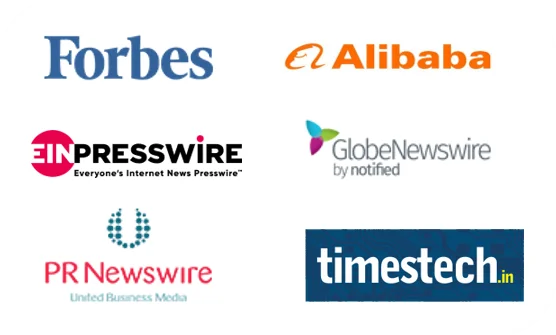Market Overview:
"The global electronic earmuffs market was valued at US$ 1.7 billion in 2024 and is expected to register a CAGR of 7.8% over the forecast period and reach US$ 3.3 billion in 2033."
|
Report Attributes |
Details |
|
Base Year |
2024 |
|
Forecast Years |
2025-2033 |
|
Historical Years |
2021-2024 |
|
Electronic Earmuffs Market Growth Rate (2025-2033) |
7.8% |
Electronic earmuffs are designed to be worn over the ears and serve as hearing protection devices with audio enhancement capability. These products reduce noise levels while allowing the wearer to hear sounds such as speech or warnings and alerts in specific environments. These devices are mandatory in environments where noise levels are high and exposure can cause hearing loss or damage to eardrums.
They are more widely used at construction sites where heavy machinery is used, for safety at controlled blasting or excavation sites or where similar tasks are conducted, at shooting ranges, and industrial facilities where noise levels are high.
Demand for electronic earmuffs is driven by factors such as occupational safety regulations, increasing awareness about hearing protection, comfort, and convenience. Workers and individuals prefer electronic earmuffs for their ability to provide hearing protection without compromising situational awareness.
The global electronic earmuffs market is registering steady revenue growth due to rising demand for hearing protection solutions across various industries. Consumption of electronic earmuffs is increasing as occupational safety regulations become more stringent, and awareness about hearing health grows. A wide range of products, including wireless and Bluetooth-enabled earmuffs with advanced features such as active noise cancellation and sound amplification are currently available in the market.
Initiatives promoting workplace safety and employee well-being are also key factors driving market revenue growth. Compliance with safety standards and regulations is essential for electronic earmuff manufacturers to ensure product quality and effectiveness.
Electronic Earmuffs Market Trends and Drivers:
Increasing Occupational Safety Regulations: Stringent safety regulations in various industries mandate the use of hearing protection devices, including electronic earmuffs. This has resulted in a surge in demand for these products to ensure employee well-being and compliance with safety standards.
Growing Awareness of Hearing Protection: Rising awareness about the long-term effects of noise-induced hearing loss is resulting in an increasing number of individuals and organizations prioritizing hearing protection measures. Electronic earmuffs, with ability to provide both hearing protection and situational awareness, are becoming increasingly popular.
Technological Advancements: Advancements in electronic earmuff technology have led to the development of more sophisticated and feature-rich products. These include active noise cancellation, Bluetooth connectivity, integrated microphones for communication, and sound amplification. Increasing preference for more advanced and efficient products to enhance user experience and safety is driving revenue growth of the market.
Demand from Varying Industries: The electronic earmuffs market demand continues to increase across various industries including construction, manufacturing, mining, military, and shooting sports arenas and ranges. This varied demand base provides significant room for leveraging opportunities and is contributes to revenue growth.
Focus on Comfort and Ergonomics: Manufacturers are prioritizing the comfort and ergonomics of electronic earmuffs to improve user experience and encourage prolonged usage. Features like adjustable headbands, cushioned ear cups, and lightweight designs are positively impacting market growth by enhancing user satisfaction and convenience.
Electronic Earmuffs Market Restraining Factors:
Price Sensitivity: Cost can be a significant barrier to adoption, particularly in price-sensitive markets. Higher-priced electronic earmuffs may deter budget-conscious consumers or organizations from investing in these products, thereby limiting potential market growth.
Limited Awareness and Education: Despite increasing awareness of hearing protection, there are still gaps in understanding regarding the benefits and importance of electronic earmuffs. Limited awareness and education efforts can restrain potential sales and adoption.
Competition from Alternatives: Traditional passive earmuffs and earplugs, which are generally more affordable, continue to be viable alternatives for hearing protection. The availability of these alternatives can restrain purchase decision and sales of electronic earmuffs in certain market segments.
Compatibility and Integration Challenges: Integrating electronic earmuffs with other safety equipment or communication systems can be a challenge. Compatibility issues and the need for additional equipment or systems can increase costs and complexity, dissuading potential customers.
Regulatory Compliance: Meeting and maintaining compliance with evolving safety regulations and standards is crucial for electronic earmuff manufacturers. Failure to comply can lead to legal issues, penalties, and reputational damage. Staying abreast of changing regulations and ensuring compliance can be demanding for businesses.
Electronic Earmuffs Market Opportunities:
Expansion into Emerging Industries: Adoption of electronic earmuffs is expanding beyond traditional industries such as construction and manufacturing. Companies can capitalize on emerging sectors such as healthcare, entertainment, and sports, where need for hearing protection is gaining importance. Developing earmuffs tailored to the unique requirements of these industries can open up new revenue streams.
Product Innovation and Differentiation: Continuous innovation is crucial to stand out in the competitive market. Companies can invest in research and development to introduce advanced features, such as integrated biometric sensors, real-time monitoring, customizable noise filtering, and connectivity options. Offering unique and differentiated products enhances customer appeal and can command premium pricing.
Customization and Personalization: Providing customization options for electronic earmuffs, such as adjustable fit, color variants, and branding options, can attract customers seeking personalized solutions. Targeting specific customer segments with tailored offerings, including options for children, professionals, and outdoor enthusiasts, can open up new revenue streams.
Service and Maintenance Contracts: Offering comprehensive service and maintenance contracts for electronic earmuffs can generate recurring revenue. Services can include regular inspections, calibration, firmware updates, and repairs. Providing reliable after-sales support enhances customer satisfaction, fosters long-term relationships, and generates additional revenue streams.
Global Expansion: Companies can explore untapped international and domestic markets and expand their presence globally. Leveraging distribution partnerships and agreements, establishing local sales and service centers, and adapting products to meet regional regulations and preferences can unlock new revenue opportunities in different geographical markets.
Electronic Earmuffs Market Segmentation:
By Material Type:
- Foam
- Plastic
- Metal
- Others
By Product Type:
- Over-the-head Earmuffs
- Behind-the-head Earmuffs
- Hard Hat-mounted Earmuffs
- Neckband-style Earmuffs
By Noise Reduction Rating (NRR):
- Low NRR (up to 20 dB)
- Medium NRR (21-25 dB)
- High NRR (26-30 dB)
- Very High NRR (above 30 dB)
By End-Use Industry:
- Construction
- Manufacturing
- Mining
- Military & Defense
- Healthcare
- Entertainment
- Others
By Application:
- Industrial
- Shooting Sports
- Aviation
- Personal Use
- Others
By Sales Channel:
- Online Retail
- Offline Retail
By Price Range:
- Economy
- Mid-Range
- Premium
By Features:
- Active Noise Cancellation
- Bluetooth Connectivity
- Sound Amplification
- Integrated Communication
- Others
By User Age Group:
- Adults
- Children
By Distribution Channel:
- Direct Sales
- Distributors/Resellers
By Battery Type:
- Disposable Batteries
- Rechargeable Batteries
By Application Power:
- Low Power
- Medium Power
- High Power
By Beam Diameter:
- Narrow Beam Diameter
- Wide Beam Diameter.
Electronic Earmuffs Market, By Region:
North America:
- United States
- Canada
Europe:
- Germany
- The U.K.
- France
- Spain
- Italy
- Russia
- Poland
- BENELUX
- NORDIC
- Rest of Europe
Asia Pacific:
- China
- Japan
- India
- South Korea
- ASEAN
- Australia & New Zealand
- Rest of Asia Pacific
Latin America:
- Brazil
- Mexico
- Argentina
Middle East & Africa:
Report Metric
Report Details
Electronic Earmuffs Market size available for the years
2021-2033
Base Year
2024
Forecast Period
2025-2033
Compound Annual Growth Rate (CAGR)
7.8%
Segment covered
By Material Type, Product Type, Noise Reduction Rating (NRR), End-Use, Industry, Application, Sales Channel, Price Range, Features, User Age Group, Distribution Channel, Battery Type, Application Power, Beam Diameter, and Regions.
Regions Covered
North America: The U.S. & Canada
Latin America: Brazil, Mexico, Argentina, & Rest of Latin America
Asia Pacific: China, India, Japan, Australia & New Zealand, ASEAN, & Rest of Asia Pacific
Europe: Germany, The U.K., France, Spain, Italy, Russia, Poland, BENELUX, NORDIC, & Rest of Europe
The Middle East & Africa: Saudi Arabia, United Arab Emirates, South Africa, Egypt, Israel, and Rest of MEA
Fastest Growing Country in Europe
Germany
Largest Market
North America
Key Players
3M Company, Honeywell International Inc., MSA Safety Incorporated, Moldex-Metric, Inc., Howard Leight by Honeywell, Peltor (3M Personal Safety Division), Walker's Game Ear, Sordin AB, Etymotic Research, SensGard LLC, Pro Ears, Elvex Corporation, Liberator Performance Products, Decibullz LLC, NoNoise Hearing Protection, and among others.
Frequently Asked Question
What are some key factors driving growth of the global electronic earmuffs market?
The growth of the global electronic earmuffs market is primarily driven by increasing occupational safety regulations, growing awareness of hearing protection, technological advancements, expanding industrial sectors, and the need for enhanced situational awareness in noisy environments.
What are the prominent applications of electronic earmuffs?
Electronic earmuffs find applications in various industries, including construction, manufacturing, mining, military & defense, healthcare, shooting sports, aviation, and personal use. They are used to protect individuals from hazardous noise while allowing them to hear important sounds.
What are the notable features offered by electronic earmuffs?
Electronic earmuffs come with various features, including active noise cancellation, Bluetooth connectivity, sound amplification, integrated communication systems, adjustable fit, and customizable noise filtering. These features enhance user experience and cater to specific needs.
How is the competitive landscape of the global electronic earmuffs market?
The global electronic earmuffs market is highly competitive, with key players focusing on product innovation, technology advancements, strategic partnerships, and customer-centric approaches. Companies aim to differentiate themselves through product quality, pricing, brand reputation, and customer service.
What regions and countries exhibit significant demand for electronic earmuffs?
Prominent regions for electronic earmuffs include North America, Europe, and Asia-Pacific. Countries like the United States, Germany, China, and Japan showcase substantial demand due to their industrial sectors, strict safety regulations, growing awareness, and government initiatives supporting occupational safety.

